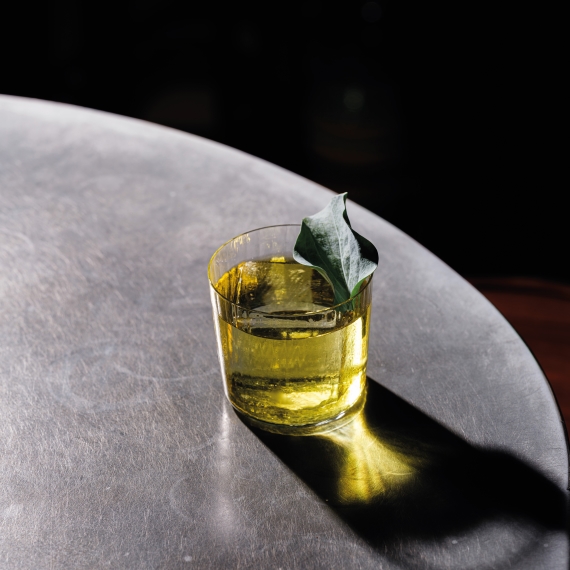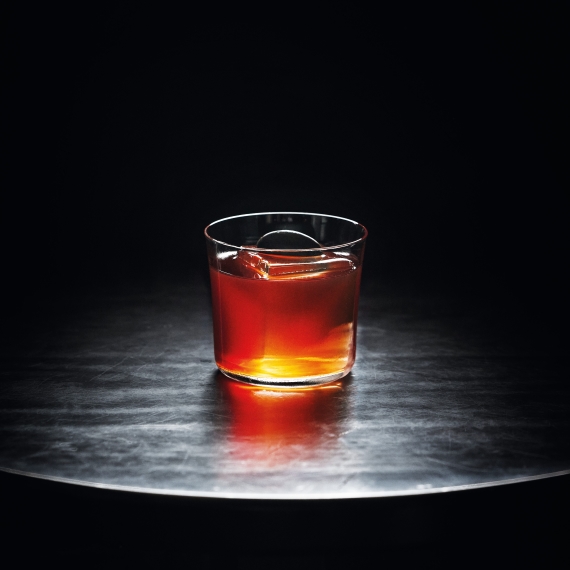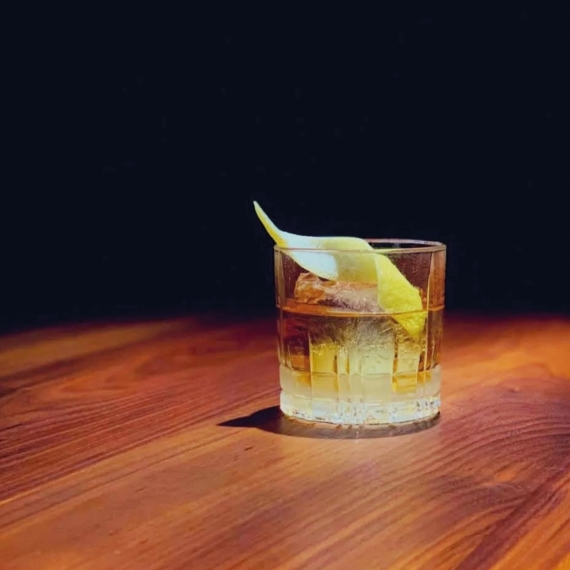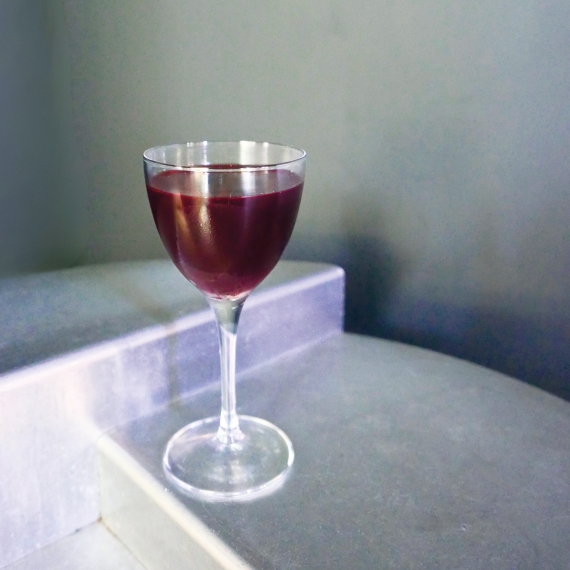The Negroni is a classic cocktail steeped in Italian heritage and its popularity is greater today than it ever has been. Made with equal parts gin, sweet vermouth and Campari, it was named the number one cocktail in the Drinks International Cocktail Report for the third year running in 2024. It’s punchy and bold by nature, driven by its key defining ingredient, the bitters, which can often come as quite an acquired taste. So why is the serve so popular?
The bitters
The Negroni definitely stands out with consumers and that’s primarily down to the use of the herbal bitters. The category offers lower-sugar, lower-abv liquids that are generally consumed before dinner – not to be confused with amaro, which sees a higher abv and is consumed typically after dinner. It’s this bitterness, paired with the lower abv, that makes it so popular in mixology, driven by its starring role in the Negroni.
With a contested history, the Negroni is a descendent of the Americano – sweet vermouth and Campari lengthened with soda water – and the Milano Torino before it, without soda water. The most common Negroni origin story is of an eponymous Italian count walking into a bar and ordering a boozier Americano, so the bartender drops the soda and adds gin, creating the Negroni. The bartender was supposedly Fosco Scarselli at Caffè Casoni in Florence around 1919.
Today’s Negroni maintains this heritage, but brands are noticing an opportunity to throw their hats into the ring and showcase themselves in variations on the classic. Typically in bars, the bitter element of the Negroni is dominated by Campari, with brands such as Martini Riserva also a popular choice. Roberta Mariani, global advocacy director at Italspirits, notes: “The category is growing and there are a lot of opportunities for everyone. The more brands in the category, the more awareness there’s going to be. Martini and Campari are two of the oldest brands in Italian spirits – back in the day, the Negroni was made with Campari bitters and Martini vermouth, the brands have always been there. Now, having different brands in the category really helps. They are taking the tradition and transforming it. We also need innovation and new brands and ideas coming.”
Amaro Santoni offers something different in the bitter element of the classic, with its recommended take on the Negroni made using one part Amaro Santoni, one part gin, one part rose vermouth and garnished with two frozen grapes. Luca Missaglia, managing partner of Amaro Santoni and co-founder of The Art of Shaking, says: “Over the past few years, there's been a real shift towards innovation within the cocktail, especially in terms of ingredient substitutions and the exploration of flavours that move beyond the traditional sweet, bitter and herbal balance. I think we’re seeing more emphasis on amari that offer a broader spectrum of flavour profiles. Amaro Santoni is slightly more herbal, with a less aggressively bitter profile compared to Campari.”
Missaglia also notes that liquids such as Amaro Santoni allow for “greater customisation in the drink’s flavour profile while keeping the core elements of a Negroni intact”. This comes with an increasing demand for more approachable, less-bitter drinks with brands that operate in that space, making cocktails such as the Negroni more accessible to the wider consumer.
“People are also seeking more local, artisanal alternatives to the big brands like Campari, and I think this shift reflects the broader movement in the drinks world toward more nuanced, quality driven ingredients. It's a way to elevate the drink while keeping it rooted in tradition,” Missaglia continues.
The serve
With more people interested in the category, and both brands and bartenders expanding on the definition of a Negroni, it’s become more than just a cocktail. Andy Loudon, director of bars at Rosewood London, says that, while the original form “remains untouchable”, the Negroni serves as one of the “most versatile blueprints in cocktail culture” and is a “blank canvas for creativity” due to being a one-part strong, one-part fortified wine, one-part bitter aperitif.
“For years, the Negroni lived somewhat in the shadows as a bartender favourite – strong, bitter and, at one time, often seen as medicinal by those unfamiliar with its charms. But as palates have shifted, so too has the Negroni's popularity,” Loudon continues. When it comes to takes on the Negroni, bars all over are noticing this popularity and offering variations that highlight different ingredients. For example, Salvatore Calabrese, founder of Velvet bar at Corinthia London, created the Negroni Svegliato when opening his venue at The Cromwell in Las Vegas. The coffee-infused Negroni is a mixture of coffee, Campari and gin, designed to “keep my guests awake as the night goes on. I wanted to avoid using water in my moka pot, adding vermouth instead, when creating my everyday coffee recipe, and that’s how the cocktail was created”. While some variations play on the foundation of the traditional Negroni, others use it as more of a flavour profile to build from.
Popular culture has also influenced the Negroni’s standing, with celebrities such as Stanley Tucci showcasing how he makes his Negroni on Instagram, or actor Emma D’Arcy helping the Negroni Sbagliato have its viral moment after a Tiktok video to promote House of the Dragon. This, coupled with an increasing interest in Italian culture and its consumption habits, is giving herbal bitters more traction and attention worldwide.
Other variations include the White Negroni as an “easy way to approach the category”, notes Mariani. “If it’s made with Italicus and you’re adding bergamot, it won’t have the same bitterness, and if you’re using Savoia Rosso with different vermouth you’ll have a smoother, mellow Negroni.”
With people building on the popularity of the Negroni and using it as a blueprint to expand on, it begs the question of where is the line of what is still considered a Negroni?
Loudon says: “Not every experiment lands. Smoked Negronis, for example, have been tried many times but rarely to good effect. There’s something about the marriage of smoke with bitter that never quite settles. It's a reminder that while the canvas may be open, it’s not without its boundaries. It’s one thing to play with the brushstrokes – it’s another to paint over the whole canvas.”
Equal Parts, London

From the Sea
Aquavit infused with oyster leaves, Suze, Cocchi Americano, a touch of peat, served with an oyster leaf.
Carina Soto Velásquez, bar director at Equal Parts, London, notes: “This cocktail, created by bar manager Bryn Lovell, showcases his love for bold flavours and savoury touches, inspired by the construction of a Negroni but featuring unusual ingredients.
Himkok, Oslo

Liquorice
Himkok gin, Martini Bitter, Cocchi Torino, salty liquorice and orange bitters.
Paul Aguilar, bar manager at Himkok, Oslo, notes: “We’ve observed a growing trend of adapting the Negroni’s core components to reflect regional tastes and seasonal ingredients. On our new menu, Liquorice reimagines the Negroni with distinctively Nordic ingredients. These flavours not only align with local preferences but also bring an exciting twist to a beloved classic.”
Above Board, Melbourne

The Proposition
Tempus Fugit Gran Classico and a dash of crème de violette, served over ice with a lemon twist.
Hayden Scott Lambert, co-owner of Above Board, Melbourne, says: “This variation softens the drink’s traditional bitterness. What’s great about The Proposition is its versatility, allowing us to substitute different spirits while still maintaining a refined and approachable flavour profile.”
Kink, Berlin

Mercury
Gin Mare Capri, cassis, bay leaf, beetroot and citrus.
Daniel Scheppan, co-founder of Kink, says: “We find the Negroni continues to inspire creativity and innovation in cocktail creation. Seasonal adaptations and modern spins are particularly popular among Negroni lovers and at Kink we cater to this demand with unique offerings.”




